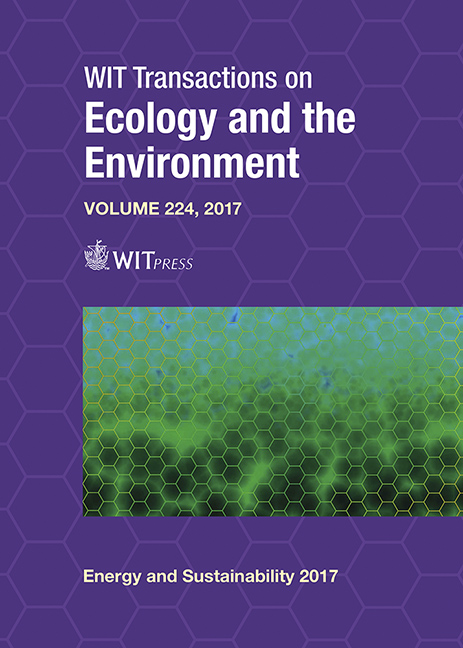AN EVALUATION OF THE GREENHOUSE GAS REDUCTION POTENTIAL THROUGH THE CO-FIRING OF COAL AND MICROALGAE BIOMASS
Price
Free (open access)
Transaction
Volume
224
Pages
9
Page Range
257 - 265
Published
2017
Paper DOI
10.2495/ESUS170241
Copyright
WIT Press
Author(s)
NOKUTHULA E. MAGIDA, BEN ZEELIE, GARY DUGMORE
Abstract
South Africa is heavily depended on coal to meet its energy requirements. There is therefore a significant incentive to develop and implement clean coal combustion technologies that would reduce the environmental impact of energy generation from coal. For power generation, the co-firing of renewable biomass fuels at conventional coal-fired power stations is recognised as one of the lower-cost, lower-risk options to achieve significant greenhouse gas (GHG) emission reductions. The aim of study was to evaluate the GHG emission reduction potential through the co-firing of coal and microalgae biomass. Coal to microalgae mass ratios of 95:5 and 90:10 were prepared, combusted in a fixed-bed reactor and compared to pure coal. The emission concentration of CO2 (%), NOx (ppm) and SO2 (ppm) of coal and Coalgae® blends (a composite material containing coal and microalgae biomass) were measured during the combustion of the three materials using Lancom 4 portable flue gas analyser. The results have shown significant reduction in CO2, SO2 and NOx levels when Coalgae® was burned. Emission reductions of 8.4%, 17.5% and 10.4% for CO2, SO2 and NOx were achieved with Coalgae® 5%, respectively. Reductions of 10.7%, 21.4% and 15.4% for CO2, SO2 and NOx were achieved with Coalgae® 10%, respectively. Moreover, the combustion efficiency of Coalgae® was maintained at 97.60% slightly below 99.26% (1.7% difference) obtained from the pure coal. Based on the above findings, the co-firing of coal and microalgae biomass was necessary for the reduction of GHG emissions. As such, Coalgae® can be considered as an alternative fuel in any coal driven process for energy generation.
Keywords
coal, Coalgae®, microalgae biomass, co-firing, greenhouse gas emissions





